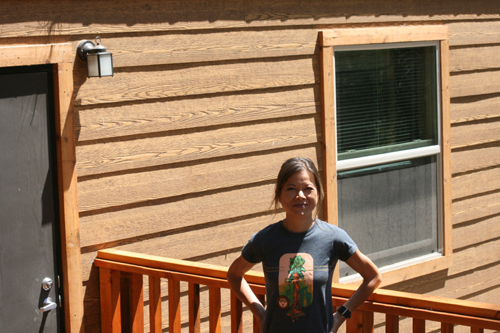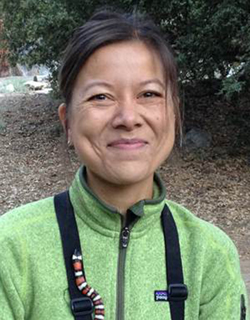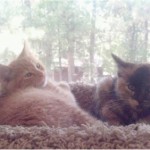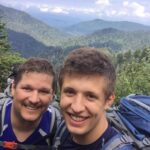

Jennifer Gee, the new director of the University of California James Reserve north of Idyllwild, is, by nature, an explorer, adventurer and trailblazer. She credits growing up in the Pacific Northwest with her love of the outdoors and her eventual decision to become a field biologist.
“I started birding when I was nine. I think I’ve always been a scientist,” she said, although that wasn’t always clear to her as a young adult exploring, with enthusiasm, a number of different life path choices. “I’m really fierce when I settle on something,” said Gee. “I just leap and I don’t think about it.”
While deciding on a career, Gee completed a bachelor’s in English literature with a minor in classics at Swarthmore College in Pennsylvania. Before starting Swarthmore, she spent eight months backpacking in Europe and was in Berlin when the wall came down. After Swarthmore, she returned to Washington state and completed another bachelor’s degree, this one in zoology. She then went on to Princeton and completed both a master’s degree and a doctorate in ecology and evolutionary biology. She subsequently taught, conducted fieldwork in the Galapagos Islands, Barbados, and the Concord Field Station in Massachusetts, and completed postdoctoral work at Harvard, Cornell and University of California, Davis.
Gee remembered when she knew she would be a scientist working in the field. “While at the University of Washington there was a lab going up to Alaska,” she recalled. “One day walking out in the tundra, I knew where I had to be. I did not want to devote my life to the lab, grant and publication writing. I knew I couldn’t leave the field even for a year.”
And it is in the field that Gee found her calling and conducted distinguished research that broke new ground. “Being in the Galapagos reshaped my view of evolution,” said Gee. “What environmental, climate and molecular changes allowed some species to adapt and survive while others could not?” Gee explained that in a bad rain year, seeds on which Darwin finches fed were particularly hard. Only a firm beak could break through shells in bad climate years. “What were the molecular changes and genetic factors that expressed the beaks? That’s the interesting part of species formation, how they separate and come back together. Who are the gatekeepers for particular genes that are passed and where does the process lead?”
With these questions, Gee returned to what would become an identifying research path for her — hybridization in quail species in the Santa Rosa Mountains of Southern California and in one part of Mexico.
And since part of that research is in Riverside County, her July 1 start as the James Reserve’s new director was ideal. “Directing a field station feels like my calling in life,” she said. “The James Reserve turned out to be the chance of a lifetime.”
Gee plans to continue the work begun under previous Director Becca Fenwick, using recent construction of residential and classroom buildings to create a research campus at which students and teachers could conduct longer-term field studies.
“It’s a fun position to be in,” said Gee of her new job. “I get to reinvent the place. I believe in this field station. I’m thrilled to have a blank slate to work with.” Gee said she wants to do more public outreach and open the reserve to a greater number of bona fide researchers and their projects.
Having conducted research at the University of California Phillip L. Boyd Deep Canyon Desert Research Center in the Pinyon area while a Princeton graduate student, Gee is thrilled to be back. “I fell in love with that place and those birds [the quail],” she remembered. Her present assignment gives her access and time to continue her long-term study of that population.










